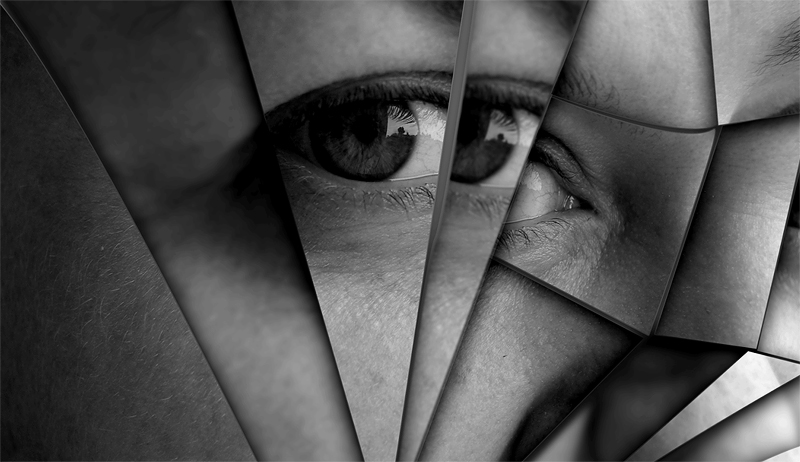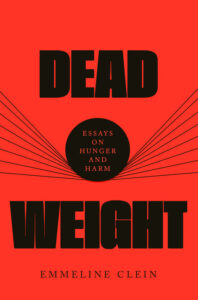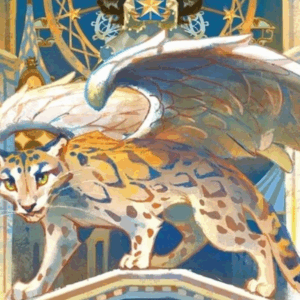
Sororal Death and Sad, Sexy Icons: Emmeline Clein on Eating Disorder Memoirs and the Contagion of Identification
“For all the girls who weren’t wrong and all the girls who were.”
Have you ever seen a girl and wanted to possess her? Not like a man would, with his property fantasies. Possess her like a girl or a ghost of one: shove your soul in her mouth and inhabit her skin, live her life? Then you’ve experienced girlhood, or at least one like mine. Less a gender or an age and more an ethos or an ache, it’s a risky era, stretchy and interminable. It doesn’t always end. That ever-gnawing void can make you want a body to match, one that looks as hungry as your heart is.
Sobbing and throbbing, a lot of the most beloved icons of girl culture are very, very sad, and very, very skinny. They are beautiful, and their sorrow only adds to their sex appeal. Tears drip down cheeks onto supple pouts, but that suppleness never extends to the rest of their physical forms, which tend toward extremely slender. Bodies shrink to ever-smaller sizes as sad girls lose their appetites, distracted by all that emoting.
The sexy, skinny, sad girls consume a lot of alcohol and drugs, but they don’t eat often, and this is integral to the trope. Marissa Cooper, with her hidden vodka bottles and torrid affairs, chasing oblivion in The O.C., is not so different from the young heroines of Jean Rhys novels, drinking their way through the bars and hotel rooms of European cities. All these girls distraught enough to delight us, drinking on empty stomachs. Those girls prefer Pernod to food. Marissa’s generation-defining low-rise jeans and spaghetti straps hang off her bones. She’s a dead girl walking from the jump, all jutting angles and a handle of liquor in her bag.
Young adult novels are so often sketches of sad teenage girls subsisting on some wildly minuscule portion of food, licking single spoonfuls and slicing things too thin. It’s not just young adult literature either; in so many stories, a certain kind of girl is always “subsisting.” I’ve run into that word, stopped and underlined it, more times than I can count. It is a term implying spartan survival, never the luxury of living. These girls opt for other luxuries: longing stares, hearing the cadence of their names in whispers, slipping into sample sizes.
In the eating disorder memoirs I studied diligently when I started starving myself in 2007, at twelve years old, writers subsisted on cigarettes and specific foods I won’t tell you about. I have a file on my computer of all the foods I’m not naming now, a file filled with the pithy lists of starvation diets written by women writers I admire. These were usually offered up in curt trios, holy trinities. These girls thought themselves saints of something, and I nodded and kneeled. They wrote hunger haikus, so I copied them down dutifully, a disciple. I planned to list them here, before I realized I don’t want to write one of those religious texts, rife with commandments and sublime suffering and hierarchies. Too many people I love have misread a memoir as a manual.
I don’t want to inspire anyone to restrict their intake, dietary or emotional. I want to give something to sad girls, former ones and almost ones and aspiring ones and current ones and their lovers and their haters, that sounds like a symphony or a screamo band or a country song to cry to, cacophonous and guttural and probably trying too hard. I want to drape the living skinny, sexy, sad girl in hazard lights instead of letting her corpse soak up the spotlight, and I don’t want to demonize her even as I try desperately not to glamorize her, because it’s really not her fault. She probably just watched the same movies I did.
In middle school in the mid-aughts, I read young adult novels with titles like Suicide Notes from Beautiful Girls and Pretty Little Liars, listened to Paramore on a loop and watched Gossip Girl and The O.C. obsessively. In books and on screens, the skinny, sexy, sad girl usually likes to numb herself. If unconsciousness is unavailable, she might distract herself from the pain with a high. A lot of these characters don’t survive their storylines. Bright young things flame out.
We all know what happened to The Virgin Suicides’ series of pubescent, pallid blonde beauties. Flower-crowned and drowned, Ophelia is an icon to girls cruising for a muse. Daisy, Girl, Interrupted’s bulimic character, died by suicide on her birthday, and she is the only girl in the book who gets called sexy. 13 Reasons Why’s high school protagonist Hannah overdosed as a literary character and slit her wrists once she was adapted to television, Emma Bovary drank poison, Anna Karenina dove in front of a train, and I’m only halfway through the alphabet in Wikipedia’s list of “Suicides in Fiction.” I’m just namechecking the most famous ones, the girls you’ve clicked past or gazed at, maybe even cried over. Sad girls lilt through their lonely lives, becoming beloved only in death. It doesn’t seem to matter how many times we watch this type of girl die; we can’t learn our lesson, won’t saint them until they martyr themselves for the cause.
I want to drape the living skinny, sexy, sad girl in hazard lights instead of letting her corpse soak up the spotlight, and I don’t want to demonize her even as I try desperately not to glamorize her, because it’s really not her fault.
I was already sad, so I thought I might as well express it, like many of these girls did, with my body. I stopped eating as much and spent hours scrolling through Tumblr, finding other sad girls and reposting their poems and black-and-white photography. I watched my body shrink in the mirror, proud to discover how powerful my mind was. Lying in bed at night, I imagined the inside of my stomach, whatever I’d eaten that day stacked neatly against bloodred walls. My mother noticed the sculpture to self-hatred I was hammering away at and sent me to a clinic, where I was first given the diagnoses of “eating disorder,” “anxiety disorder,” and “depression.” Finally, I didn’t feel like a fraud. I was officially as sad as my idols and my online sisters.
Susan Sontag once wrote the phrase sororal death in her journal—she thought it meant women dying for each other, and she didn’t think it existed, suicidal solidarity, but then, she’d never spent time in an eating disorders ward or stood watch outside a bathroom a friend was throwing up in. Anne Boyer, writing a theoretical framework for breast cancer, defines sororal death as dying of being a woman. She writes a membership roll: the women authors who died of breast cancer or suicide to avoid the progression of breast cancer.
Other sororal deaths I’d include: deaths from eating disorders, which have some of the highest mortality rates of any mental illnesses, and deaths from botched plastic surgeries. Dying of the demands of womanhood, the fascism of femininity. Boyer includes Jennifer, one of Valley of the Dolls’ starlets, who chose death instead of a mastectomy because she thought her lover and her public loved her for her hourglass body. I imagine sororal deaths by body fascism, corpses wrapped in spandex. Some yearnful, clumsy girl going to return her weights to the bin after an exercise class, but her hands are sweaty. Her dumbbell slips and lands on someone’s skull. A girl taking her Pilates rollover at the wrong angle snaps her neck. A woman strangled by the bands of the Megaformer, tangled and terrified. Someone puts their gloves on wrong in boxing class, hits their partner too hard and gives her a brain bleed. I don’t mean to make this all about working out; I only bring it up because I find myself fantasizing about or fearing imminent death whenever I’m in an exercise class, breathing hard and wishing harder.
I’m trying to be honest here: I’ve always wanted to live the kind of life that ends up in a story, but those are fiction. Being my own sexy, sad icon started getting dangerous, so I’m trying this instead. I wrote Dead Weight for and through all the girls who died sororal deaths. I am trying to harmonize with a ghost choir. Throughout the book, I quote my sisters in italics and use traditional quotation marks for the doctors, scholars, news outlets, and others who think they know what we’re up to. I quote my sisters by their first names, because I feel like I know them.
When I say sisters, I don’t mean people of a specific gender. I mean anyone who’s ever felt trapped by the genre of their life story, anyone who’s ever hurt themselves hoping to become beautiful, anyone who’s ever mistook an admiring look for love, ever longed to lick another’s pain off their tongue, taste their sweat and feed them chocolate. If you’ve survived the kind of girlhood I’ve been trying to describe here, I hope you’ll let me call you my sister. The skinny, sexy, sad girl’s silhouette has haunted so many of our dreams. She hawks her sick sort of beauty, purring false promises from just over the horizon line.
But someone stranded her at the vanishing point, where she recedes ever farther into the distance the closer we get, and they don’t want us to reach her because then we might save her, convince her she’s been lied to like the rest of us. I’m trying to row a lifeboat, and write a love letter, and learn to swim. I am writing this for the living girls hiding in their bedrooms obsessing over the dead ones, the hungry girls and horny girls and hidden girls, the dead girls who thought the only way they’d be remembered was by sliding into their place in the canon-cum mausoleum, for all the girls who weren’t wrong and all the girls who were.
In the eating disorder memoirs, the girl recovers, but she often still wants us to know how close she got to the ultimate finish line. In so many of these stories, she blames her sisters for sending her there, teaching her their tricks and comparing limbs in high school hallways, and then in hospital wards. The only way to survive seems to be renouncing your suffering sisters, transfiguring them into mean girl villains or naïve, vain illness vectors. I’m trying to find out what might happen if we blame someone other than each other and ourselves for a change.
In an exploration of her own anorexia diagnosis, the writer Rachel Aviv visits a therapist who treated her on an eating disorder ward in her childhood. She tells him she feels like she was taught the illness by other girls, girls like her best friend from the hospital, whom she googles, only to find her obituary and an article about her brief life, pockmarked by anorexia hospitalization after anorexia hospitalization.
Once, between hospitalizations, that girl went to a party. I can imagine her angst, or I can feel it, and I wish I’d been there to say hi and ask how she was feeling. Uncomfortable and uncertain among the socializing strangers, she saw a girl she’d once been in eating disorder treatment with and made a beeline for her, hoping to reminisce about things that happened when they were institutionalized, but the girl was trying to escape. Her former patient-peer shook her off; she was assimilating into the normal world, done with sick, starved girl world. The message was: You make me vulnerable.
The contagion of identification, the terror of slipping into a story with a sad ending, the notion that porousness between people is potentially toxic rather than what makes life worth living. This scene is tragic because it is true and invented, because we were taught to believe it. But we don’t have to be solo heroines on lonely journeys; we can also be sisters and friends, side characters in someone else’s story without meeting her fate. We can, maybe, even be the person who changes it.
________________________________________

From Dead Weight: Essays on Hunger and Harm by Emmeline Clein. Copyright © 2024. Available from Alfred A. Knopf, an imprint of Knopf Doubleday Publishing Group, a division of Penguin Random House, LLC.
Emmeline Clein
Emmeline Clein is a writer living in Brooklyn. Her first book, Dead Weight, is forthcoming from Knopf in February 2024, and her chapbook, Toxic, was published by Choo Choo Press in 2022.












